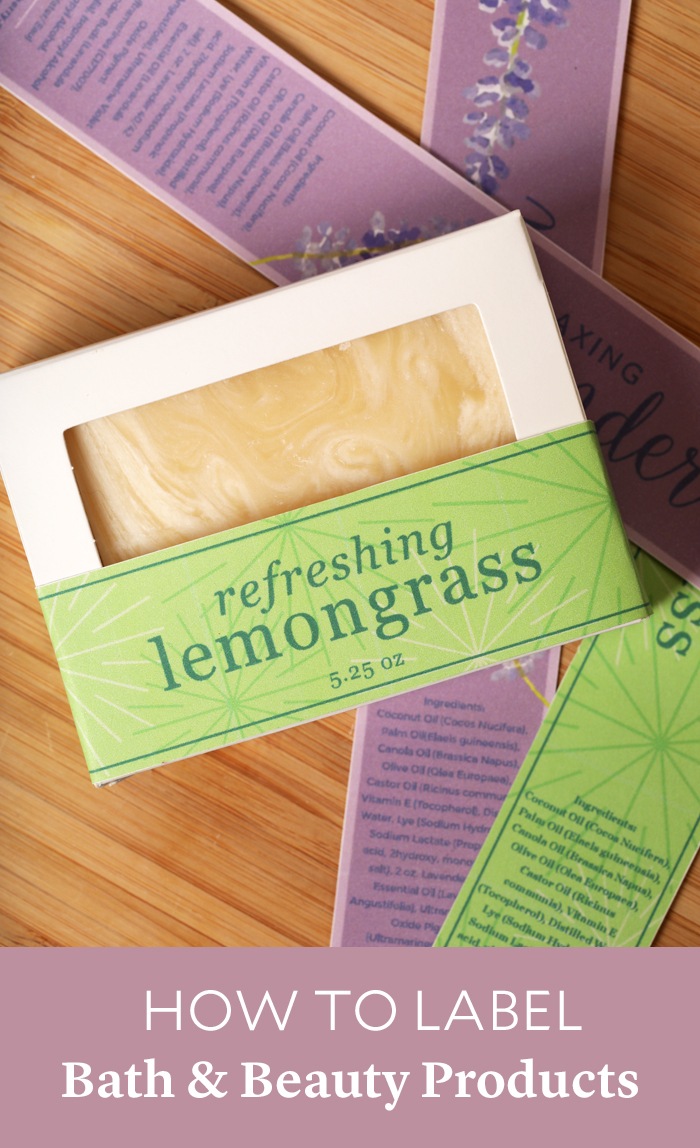
If you plan to sell DIY bath and body products, labeling them correctly is an essential step. This article goes over basics like how to define your product and what's required on the label.
This is just the bare minimum - there are other factors to consider before getting started. We highly recommend reading Soap and Cosmetic Labeling by Marie Gale. She breaks the FDA regulations down into easy-to-understand explanations, charts, and illustrations. We also recommend thoroughly researching the FDA website and checking back regularly for updates. If you need more help, you can also check with consultants or attorneys in your area who are experts on the subject.
What is your product?
First, you need to determine what your product is classified as. To meet the FDA's regulatory definition of soap, a recipe needs 3 things.
- It has to be made of fats/oils and an alkali like lye.
- Those ingredients are the only things that cleanse. Most store-bought soap has added synthetic detergents, so it's classified as a cosmetic instead of soap.
- It must be labeled and marketed only as soap meant to cleanse. If it's labeled as moisturizing, nourishing, deodorizing, etc., it's considered a cosmetic. If there are claims that it treats any skin conditions like acne or eczema, it's considered a drug.
Products like lotion, lip balm, bath bombs, etc. are considered cosmetics. Learn more about the difference between soap, cosmetics, and drugs here.
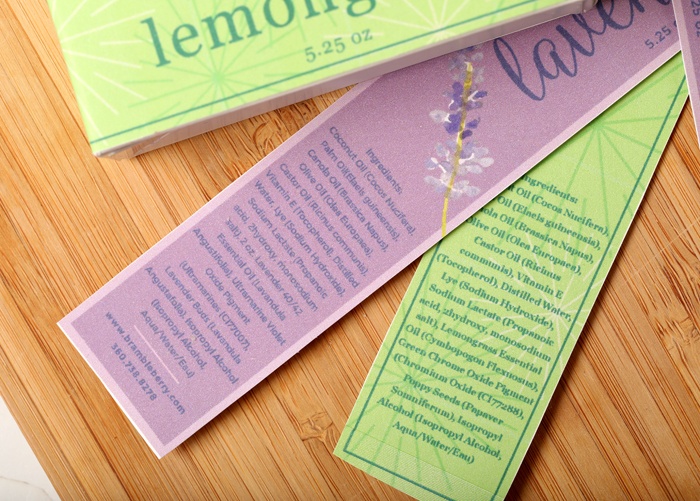
How to label products
According to the FDA and the Fair Packaging and Labeling Act, your label needs the following:
- What the product is
- The net quantity of the contents
- The name and place of business of the responsible party
- The ingredients in the recipe
- Sometimes required - cosmetic warnings and disclosure of material facts (directions for safe use, hazardous substance information, tamper-proof packaging). More on that here.
Cosmetics require an ingredient declaration, but true soap does not. However, we recommend including one anyway. That way your customers know exactly what they're putting on their body, and it's a chance for you to market all the skin-loving items in the recipe.
The ingredients need to be listed from most used to least used. The exception to this is colorants - those you can just add to the end of the list. You need to list everything in the ingredient, not just the name. For instance, Party Pink Mica would be mica, titanium dioxide, and carmine. You can find that information on each Bramble Berry product page. Fragrance ingredients are protected by trade secret law, so it can simply be listed as "fragrance" on the label.
As for the lye, you have a few options. Most people don't know about the soap making process, so seeing sodium hydroxide on the label can be confusing or alarming. Instead, you can put what's in the final bars - glycerin, saponified oils, and unsaponified oils. The problem is that you need to know exactly what order to put the ingredients in, and to do that you need to know how much glycerin was produced as compared to the saponified oils. At this time, the only way to accurately do that is to have your soap tested to see what's present in the finished bar for each and every recipe you make. We go with sodium hydroxide to make it easier.
Soap example
Let's look at the Lime Swirl Soap Project. The ingredients are as follows:
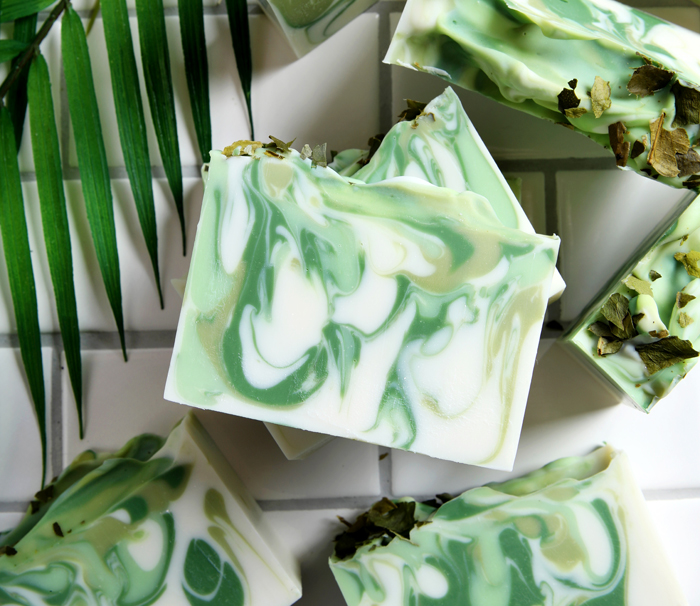
3.5 oz. Lime Butter
14 oz. Olive Oil
7 oz. Palm Oil
8.8 oz. Coconut Oil
1.8 oz. Deodorized Cocoa Butter
4.9 oz. Sodium Hydroxide Lye
10.9 oz. Distilled Water
1.6 oz. Lush Succulent Fragrance Oil
1 tsp. Titanium Dioxide
1/2 tsp. Green Chrome Oxide
1/2 tsp. Apple Moss Green Mica
1/2 tsp. Kermit Green Mica
Lime Leaves
Here's how it would look on the label: Olive oil, water, coconut oil, palm oil, sodium hydroxide, sweet almond oil, hydrogenated vegetable oil, lime peel oil, cocoa butter, fragrance, lime leaves, titanium dioxide, chromium green oxide, mica, and iron oxide.
A few things to note - lime butter is made of several ingredients, so it's listed as sweet almond oil, hydrogenated vegetable oil, and lime peel oil. Also, several of the colorants had titanium dioxide, but it only needs to be listed once. The same goes for chrome green oxide.
In the US, INCI/botanical names aren't required on the label. If you plan to sell your products internationally or if you want to be thorough, you can include them next to the common name in parentheses. You can find the INCI names on the Bramble Berry product pages as well.
Here's how that would look: Olive (olea europaea) oil, aqua/water/eau, coconut (cocos nucifera) oil, palm (elaeis guineensis) oil, sodium hydroxide, sweet almond (prunus amygdalus dulcis) oil, hydrogenated vegetable oil, lime peel (citrus aurantifolia peel) oil, cocoa butter (theobroma cacao seed), fragrance (parfum), lime leaves (citrus hystrix), titanium dioxide (CI 77891), chromium green oxide (CI 77288), mica (CI 77019), and iron oxide (CI 77491).
Melt and pour soap follows the same guidelines as cold process soap. You can find the ingredient listing on the product pages listed in the correct order. For instance, Clear Melt and Pour Soap Base is coconut oil, palm oil, safflower oil, glycerin, water, sodium hydroxide, sorbitol, propylene glycol, sorbitan oleate, and oat protein. From there, you can list fragrance, additives, and colors.
Lotion example
Here's another example using the Aloe and Agave Lotion Project.
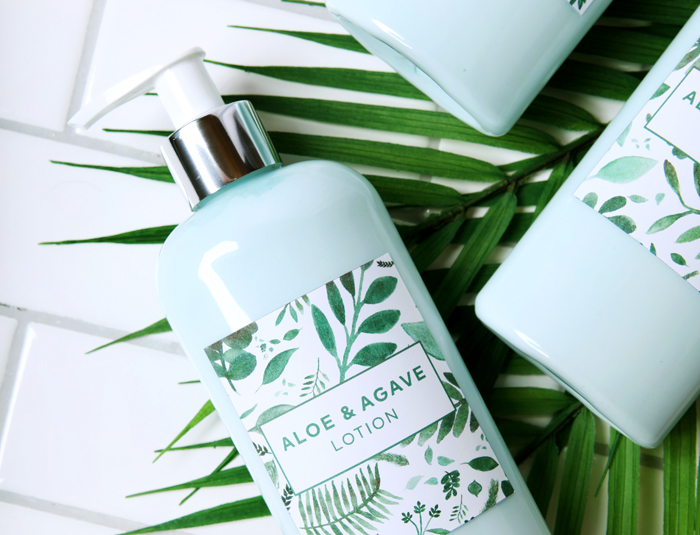
36 oz. Distilled Water
1 oz. Aloe 10x
2.6 oz. Polawax Emulsifying Wax
1.4 oz. BTMS-50 Conditioning Emulsifier
3.7 oz. Squalane Oil
1.3 oz. Avocado Oil
1 oz. Agave Extract
0.5 oz. Emerald Agave Fragrance Oil
0.5 oz. Optiphen
About 3-5 mL of diluted Emerald LabColor
The label would include: Water, squalane oil, emulsifying wax, behentrimonium methosulfate, cetyl alcohol, butylene glycol, avocado oil, aloe vera leaf juice, potassium sorbate, sodium benzoate, caprylic/capric triglyceride, agave extract, fragrance, phenoxyethanol, caprylyl glycol, Green 5, Yellow 5, phenoxyethanol, benzoic acid, and dehydroacetic acid.
You'll notice Polawax Emulsifying Wax is just listed as emulsifying wax, while BTMS-50 is listed as behentrimonium methosulfate, cetyl alcohol, and butylene glycol. That's because Polawax is protected by the same trade secret law as fragrance oils. The label also listed all the ingredients in the preservative for the lotion, as well as the preservative used to dilute the LabColor (Optiphen ND).
Lip gloss example
This one is the Peach Bellini Lip Gloss Project.
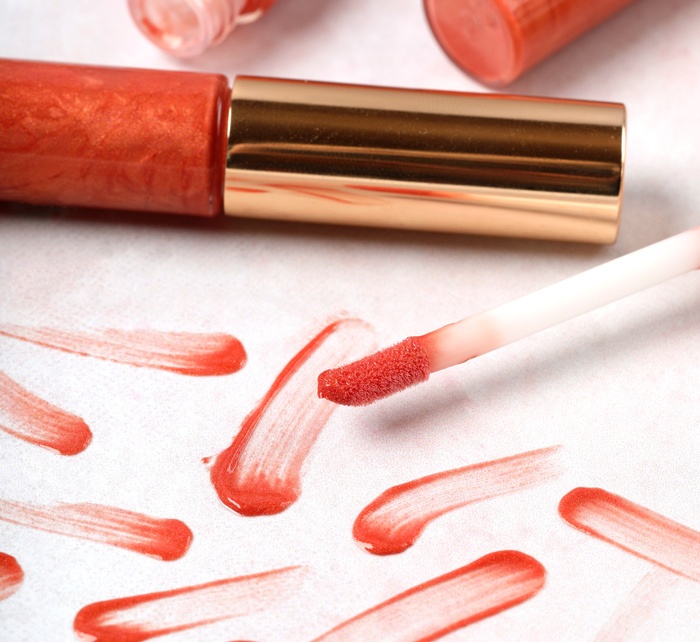
3 oz. Natural Lip Gloss Base
2 mL Peach Bellini Flavor Oil
1 tsp. King's Gold Mica
1.5 tsp. Coral Mica
1/4 tsp. Magenta Mica
The label would include: Fractionated coconut oil, castor oil, beeswax, avocado oil, vegetable oil, fragrance, mica, titanium dioxide, iron oxide, tin dioxide, Red 40 Lake, hydrogenated polyisobutene, palmitic acid, propylparaben, butylparaben, mica, methyl paraben, and manganese violet.
Although the Natural Lip Gloss Base is the trade name, you need to list the common name of each ingredient. That includes breaking down the avocado butter to avocado oil and vegetable oil. All the ingredients in the colors are listed as well.

